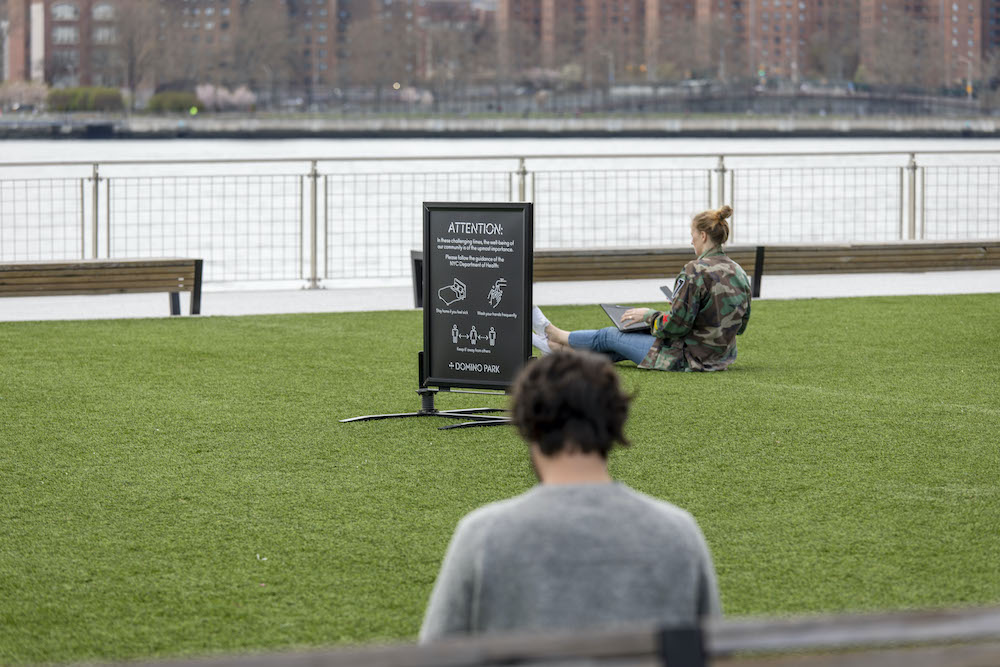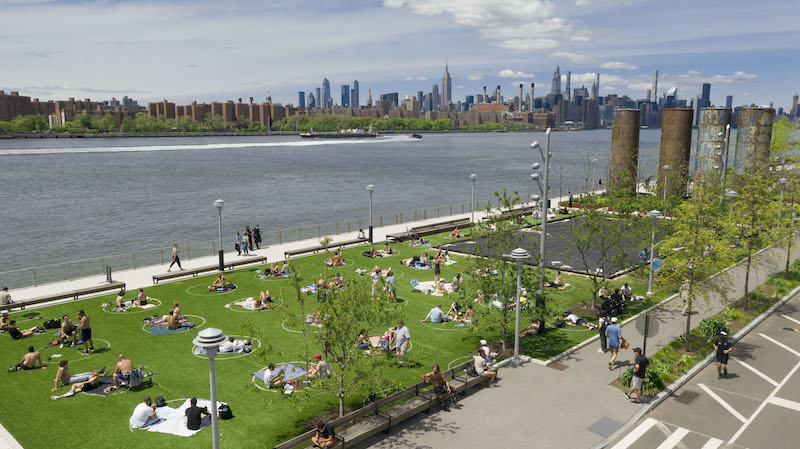Domino Park was selected as one of the winners of this year’s Urban Land Institute (ULI) Urban Open Space Award for its outstanding open spaces.
ULI’s Urban Open Space Awards Competition is a key element of 10 Minute Walk, a joint effort by ULI, The Trust for Public Land, and the National Recreation and Park Association, that is working to create green enough spaces by 2050 where ideally 100 percent of people in U.S. cities can walk to a park.
The winning parks were selected from urban areas around the U.S. and Canada, based on categories like sustainability, community engagement and economic impact.
Mike Lampariello, Director of Domino Park, said the park works hard to be a community space, and he’s proud to receive it.
“This has been an interesting summer with COVID and all the protests. We’re really proud and happy to be a platform for both of those things. High quality public open space has never been more important with the pandemic and allowing folks to get fresh air,” said Lampariello.
Domino Park, the home of the historic Domino Sugar Factory site, has been transformed into a mixed-use space within an area that previously had one of the lowest open space to people ratios in the city, said Lampariello.
The park is designed by landscape architecture firm James Corner Field Operations and privately-funded by Brooklyn-based developer Two Trees Management.
The 5-acre waterfront park, opened to the public in summer 2018, reconnects the Williamsburg neighborhood to the East River for the first time in 160 years.
In 1856, the land where the park is was once the Domino Sugar Refinery and the largest and most productive sugar refinery in the world, producing 4 million pounds of sugar daily. It closed its doors in 2004.
Two Trees acquired the park with the promise to turn it into an open public space as part of the 2014 rezoning deal it made with the city for an 11-acre megaproject on the entire Domino property footprint.
Upon completion, the project will include 2,800 rental units across four residential buildings (700 of which will be affordable), 200,000 square feet of retail, and 600,000 square feet of commercial space.

Domino Park honors the legacy of the historic sugar factory with an artifact walk of over 30 large-scale salvaged relics, including 21 original columns from the warehouse, gantry cranes, screw and bucket conveyors, and syrup tanks. “The refinery building is landmarked as historic and the park incorporates a series of historic artifacts but it’s all fresh and new and different,” said Lampariello.
Lampariello said they started the restoration process on the main building of the factory.
“We have to remember that the waterfront was a place that provided many jobs to the residents of Williamsburg,” commented City Councilmember Antonio Reynoso (D-Williamsburg, Bushwick, Ridgewood) in a video about the park’s impact on Williamsburg residents. “We’re losing a lot of that to residential development, but with that also come amenities including new park space that we didn’t have before.”
In addition to the rich industrial history of the park, its infrastructure has been designed to be environmentally-friendly and resilient.
The park was designed immediately following Hurricane Sandy, an impactful superstorm in 2012, so that influenced its plans. The park is raised above FEMA flood elevations to prevent future flood issues, said Lampariello, with many plant species that reduce stormwater runoff. The park is one of the first projects to be certified under WEDG (Waterfront Edge Design Guidelines), a certification system that guarantees waterfronts are more sustainable and accessible, he said.
“More recently in line with our sustainability initiatives, we started a collaboration with the Billion Oyster Project and Citizens Water Quality Testing initiative. We’re actually growing and observing oysters in the park,” said Lampariello.
Lampariello said the East River water quality of the park is tested on a weekly basis during the summer season. He said when the park was built they brought in clean soil and don’t have issues with toxicity, but the combined sewer overflow (CSO) is adjacent to the park. Lampariello said testing is important because during heavy rain the CSO can contribute raw sewage to the river.
During the COVID-19 crisis, the park also became home to many cooped up New Yorkers seeking nature as a way to de-stress among other things, and collaborated early on with Los Muralistas de El Puente and local artists to create open murals dedicated to essential workers.
They created social circles in May to ensure patrons are following proper social distancing procedures recommended by the CDC and government mandates. The white spray-painted circles were about 8 feet in diameter and set 6 feet apart on the park’s astroturf field.
When the Department of Sanitation (DSNY) composting program was cut, they created their own version of the food scrap drop off sites in the community in June, said Lampariello.
“Now every Monday and Thursday members of the public can bring their food scraps to Domino Park to be composted on site, and then we return that compost to Domino Park and other community gardens and parks,” said Lampariello. “All these pieces add up to what we’re going for and that’s [being] a community resource.”






